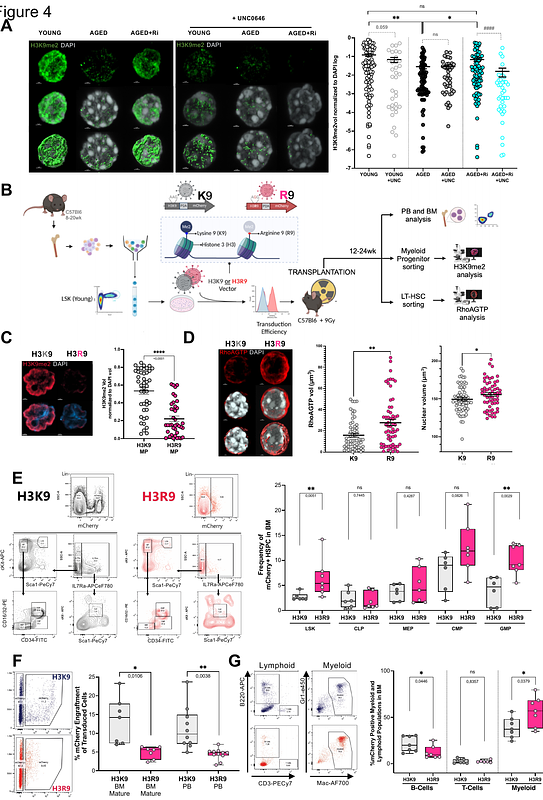Targeting RhoA activity rejuvenates aged hematopoietic stem cells

Targeting RhoA activity rejuvenates aged hematopoietic stem cells
Mejia-Ramirez, E.; Ianez-Picazo, P.; Walter, B.; Montserrat-Vazquez, S.; Affuso, F.; Wieser, S.; Pezzano, F.; Reymond, L.; Castillo-Robles, J.; Matteini, F.; Mularoni, L.; Macia, D.; Raya, A.; Ruprecht, V.; Zheng, Y.; Petrone, P.; Florian, M. C.
AbstractBiomechanical alterations contribute to the decreased regenerative capacity of hematopoietic stem cells (HSCs) upon aging. RhoA is a key regulator of mechano-signaling but its role for mechanotransduction in stem cell aging has not been investigated yet. Here, we show that murine HSCs respond to increased nuclear envelope (NE) tension by inducing NE translocation of P-cPLA2, which cell intrinsically activates RhoA. Interestingly, aged HSCs experience physiologically higher intrinsic NE tension, associated with increased NE P-cPLA2 and RhoA activity. Reducing RhoA activity lowers NE tension in aged HSCs. Feature image analysis of HSC nuclei reveals that chromatin remodeling is associated to RhoA inhibition, which includes the restoration of youthful levels of the heterochromatin marker H3K9me2 and a decrease in chromatin accessibility and transcription at retrotransposons. Eventually, we demonstrate that RhoA inhibition upregulates Klf4 expression and transcriptional activity, improving aged HSCs regenerative capacity and lympho/myeloid skewing in vivo. Overall, our data support that an intrinsic mechano-signaling axis dependent on RhoA can be pharmacologically targeted to rejuvenate stem cell function upon aging.